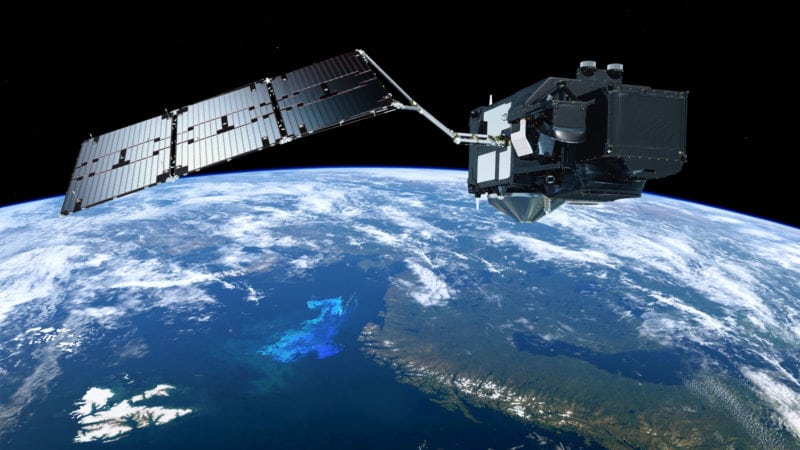Lift-off: Sentinel-3B Join its Twin Sentinel-3A in Orbit

A view of the Sentinel-3B satellite. Photo Credit: ESA, ATG Medialab
The seventh Sentinel satellite from the European Earth observation program Copernicus has been placed into space following the successful launch on April 25. The 1,150kg Sentinel-3B satellite was carried into orbit on a Rockot launcher from Plesetsk, Russia, at 17:57 GMT on Wednesday to join its identical twin Sentinel-3A.
Just 92 minutes after lift-off, Sentinel-3B sent its first signals to the Kiruna station in Sweden. Data links were quickly established by teams at the European Space Agency’s (ESA) operations center in Darmstadt, Germany, allowing them to assume control of the satellite.
During the three-day launch and the early orbit phase, controllers will check that all the satellite’s systems are working and begin calibrating the instruments to commission the satellite. The mission is expected to begin routine operations after five months.
This pairing of satellites increases coverage and data delivery for the European Union’s Copernicus environment program. Copernicus relies on the Sentinel satellites and contributing missions to provide data for monitoring the environment and for supporting civil security activities.
RUAG Space supplied a range of essential components of the Sentinel-3B. These include the satellite’s central control computer, navigation receivers, the entire carbon fiber and aluminum satellite structure, the slip rings for the solar panel as well as multi-layer thermal insulation and heating elements. Thales Alenia Space once again played a major role in the satellite’s development and construction. Thales Alenia Space is the prime contractor in a team of Europe’s largest aerospace companies for the development and construction of the two Sentinel-3 satellites.